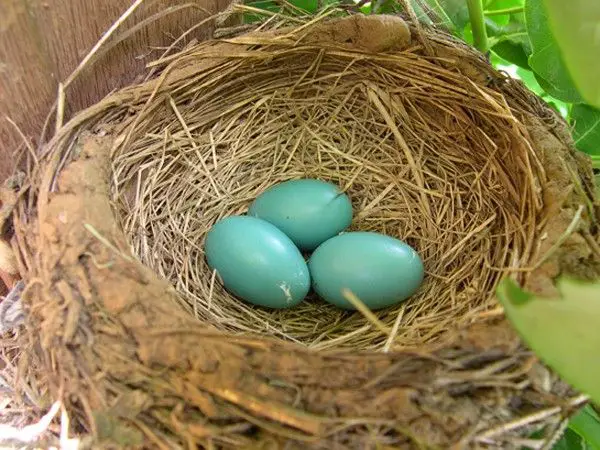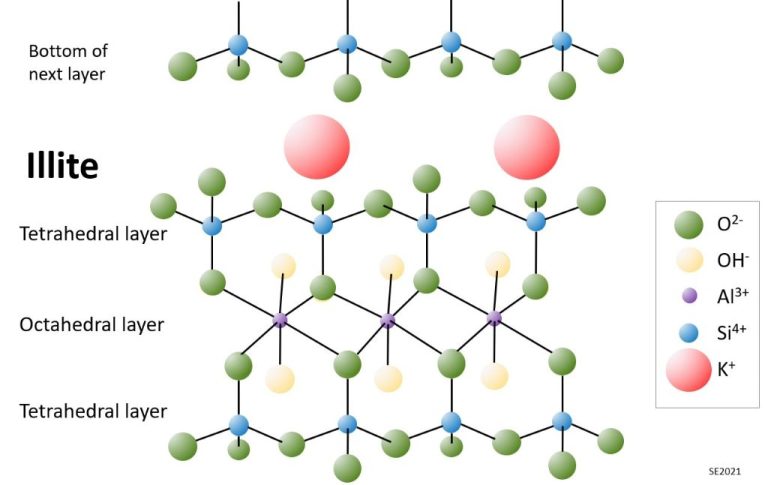Where Do They Get Pottery Clay From?
Pottery clay refers to any type of clay body that is suitable for making ceramic wares such as tableware,
art objects, bricks, and tiles. Clays are sedimentary rocks composed of very fine particles formed originally
from the chemical weathering and decomposition of rocks containing feldspar and other minerals. The types of clay differ based on
their mineral content and how they respond to heat. There are three main types of clays used in pottery: earthenware
clays, stoneware clays, and porcelain clays.[1]
Clay Deposits
Clay deposits are formed from the chemical weathering and decomposition of rocks over long periods of time. According to the USGS, most clay minerals form where rocks are in contact with water, air, or steam, leading to weathering processes that break down the crystalline structure of rocks and minerals. The specific types of clay minerals that form depend on the original rocks, climate conditions, and post-depositional environments. Sources such as the Environmental Characteristics of Clays and Clay Mineral Deposits report from the USGS provide more details. Weathering first decomposes igneous rocks like granite into kaolinite clays, which may then alter into other types of clays based on environmental factors. The distinctive properties of clays are determined by their platy microscopic structure, which gives clay particles their small size, shape, and surface charge characteristics. Overall, the formation of clay deposits through decomposition and chemical weathering over long periods of time results in the distinctive physical and chemical properties that make clays useful.
Common Clay Types
There are four primary types of clay used in pottery:
Kaolin
Kaolin, also known as China clay, is a white clay that is composed mainly of the mineral kaolinite. It is mined from kaolin deposits and has a high plasticity and a fine particle size 1. Kaolin is the primary clay used to make porcelain.
Ball Clay
Ball clay is a secondary clay that is composed of kaolinite and other minerals like mica. It is plastic but has high shrinkage. Ball clay is added to stoneware and porcelain to improve plasticity and workability 2.
Stoneware Clay
Stoneware clay is a mix of ball clay, kaolin, feldspar, and other minerals. It is very plastic and dense, with low absorption, and fires to a strong, vitrified state. Stoneware clays can be thrown on the wheel very thinly and are fired between 2200-2400°F 3.
Earthenware Clay
Earthenware clays contain iron and other minerals that enable firing at lower temperatures, between 1600-2200°F. Earthenware is porous and coarser compared to stoneware and porcelain. It can be decorated using glazes to make it less porous 1.
Clay Mining
Clay deposits are mined using various techniques and equipment depending on the type of clay deposit. Surface mining is commonly used for kaolin, ball clay, and common clay that is near the surface. Surface mining involves removing the overburden soil above the clay seam using bulldozers, scrapers, or shovel loaders. The clay is then extracted and loaded onto trucks.
For commercial clay deposits that are deeper underground, companies use underground mining techniques. The main method is room and pillar mining, where a series of parallel openings are driven into the clay seam, leaving pillars in between to support the roof. Continuous miners, shuttle cars, and conveyors are used to extract and transport the clay. Another underground method is longwall mining, which removes coal in large rectangular blocks using a mechanical shearer.
According to this video, surface mining equipment like excavators and front-end loaders are commonly used in ball clay mining. The clay is ripped from the quarry walls and loaded into dump trucks for further processing.
Clay Processing
Raw clay sourced from pits and mines must go through several steps to process it into a usable form for pottery. Here are the main steps involved in clay processing:
Crushing – Mined clay contains lumps and rocks that need to be broken down. The clay is put through a crushing machine or roller to break up clumps. Pug mills may also be used to grind up clay.
Screening – After crushing, the clay slurry is poured through screens to filter out rocks, pebbles, and debris. Screen sizes vary based on the fineness of clay needed. Typical mesh sizes range from 4 mesh (4 squares per inch) to 200 mesh.
Blending – Different clay deposits have varying properties. Blending clay from multiple sources creates a consistent product. Additives like grog may be blended in to improve durability and shrinkage.
Aging – Freshly processed clay contains soluble salts that may cause efflorescence later. Aging the clay through weathering reduces soluble salt content. Clay is left exposed to the elements for weeks or months depending on the initial salt levels.
Slaking – Clay powder is mixed with water into a slurry which allows clay particles to fully disperse. The slurry is left to settle so clays suspend while impurities sink.
Screening is done once again on the slaked clay slurry before it is ready for shaping and firing. Proper clay processing removes impurities and provides clay with ideal plasticity and workability for pottery making.
Source: https://ancientpottery.how/how-to-process-clay/
Sourcing Clay
Potters source their clay from a variety of places depending on their needs and location. Many potters try to source clay locally if possible, as shipping costs can be prohibitive for heavy bags of clay. Local clay deposits are dug directly by some potters, but permission and permits are required for extracting one’s own clay. Determining if clay is viable for pottery takes testing and expertise. For potters without access to local clay deposits, there are retailers that sell different types of pottery clays. These clays may be sourced regionally or imported internationally. Online retailers provide a wide selection of clays but incur shipping costs. Some commonly imported clays are porcelain and stoneware clays which require specific properties. Imported clays are more expensive but may be necessary for certain techniques and styles. Local pottery shops, craft stores or ceramic suppliers also sell clay, offering convenience if selections are limited. Joining a local pottery co-op or studio provides clay sourcing options too. Ultimately potters combine various sourcing methods based on their needs and resources.
Clay Shortages
In recent years, potters have faced shortages of certain clays due to factors like mining regulations, contamination, and demand exceeding supply. For example, some kaolin clays used for porcelain have become harder to source as regulations limit mining in places like the Southeastern United States where kaolin deposits are found.
Contamination of clay deposits has also led to shortages, as clays with higher levels of contaminants like iron or calcium are less suitable for pottery. Sites like the Wedgwood clay pits in England have faced shortages as urban development leads to contamination.
Finally, increased demand from commercial industries can reduce availability of some clays for potters. For example, tile manufacturers reported shortages of clays like kaolin due to supply chain disruptions.
Clay Alternatives
When potters face clay shortages, they often turn to alternative materials to substitute for clay. Some common substitutes include Epsom salts, Additive A, Macaloid, and Veegum T, which can be used in clay bodies in place of bentonite clay. These provide similar plasticity and workability to natural clays.
Another option is polymer clay, which is a man-made modeling compound. Brands like Sculpey and Fimo are popular for arts and crafts. Polymer clay can be shaped, baked, and painted just like ceramic clay. However, it does not have the same porous, earthen qualities.
When working with alternative materials, potters must experiment and adjust firing temperatures and processes. The final results may not have the same look and feel as traditional clay pieces. But creative potters can find ways to adapt and create beautiful works of art even when natural clay is scarce.
Environmental Impacts
Clay mining and processing can have significant environmental impacts that must be carefully managed. Mining clay often requires deforestation and the removal of topsoil, which can lead to erosion and habitat destruction. The mining process also requires large amounts of water, which can deplete local water resources. Transporting raw clay to processing facilities generates carbon emissions, contributing to climate change.
Processing clay also has environmental effects. It requires energy use for drying, firing, and other steps, leading to greenhouse gas emissions. Clay processing can produce air pollutants like dust and toxic gases. Wastewater discharge can pollute rivers and lakes if not treated properly. Proper environmental management systems are needed to control waste, emissions, land disturbance, and other impacts.
According to one study, clay mining in the Mangalapuram village in India led to deforestation, soil erosion, loss of topsoil, water pollution, and air pollution from dust (Aneesh & Suresh, 2018). Preventing similar destruction requires careful planning and environmental protection measures.
Overall, clay mining and processing must be carefully managed through impact assessments, sustainable practices, rehabilitation efforts, and robust environmental management to protect biodiversity, ecosystems, and the health of surrounding communities (Ranasinghe, 1997). Technological improvements and greater environmental awareness within the industry can help reduce clay production’s ecological footprint.
Future of Clay Sourcing
The future of clay sourcing is expected to focus heavily on innovations and sustainability. With growing environmental concerns and clay shortages in some regions, the pottery clay industry is adapting through technology and new business models.
Some key innovations for sustainable clay sourcing include technologies for reclaiming and reusing clay from pottery studios. Technologies such as clay recycling machines can process discarded unfired clay and turn it back into reusable clay (https://www.linkedin.com/pulse/pottery-clay-market-size-2024-growth-opportunities-26twf). This allows studios to reduce their raw clay usage.
There is also growing development of alternative clay bodies that require less primary clay. Companies are experimenting with materials like biochar to create firing clay composites (https://www.linkedin.com/pulse/2024-2031-pottery-clay-market-future-growth-predictive-iljtc?trk=article-ssr-frontend-pulse_more-articles_related-content-card). This allows more creativity in clay recipes with reduced environmental impact.
On the business side, some potters are exploring clay co-ops and collectives to share resources. Rather than every studio buying raw clay individually, groups will cooperatively buy in bulk and share community clay sheds. This helps optimize sourcing and provides community education.
Overall, the future of clay sourcing will require creative solutions to balance artists’ needs with environmental sustainability through both technology innovations and new business models. The industry shows promising signs of adapting to build a more sustainable clay production system.


